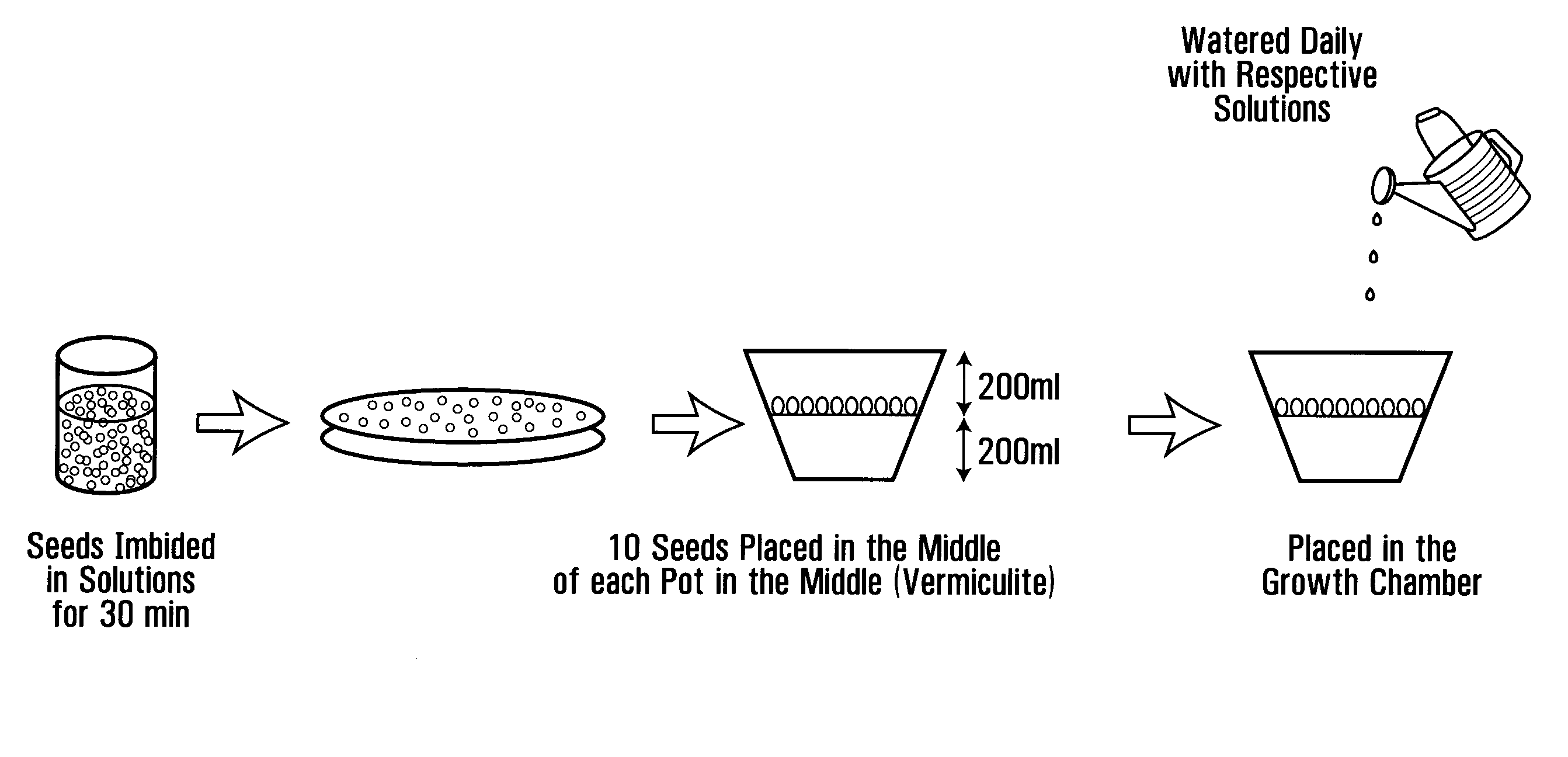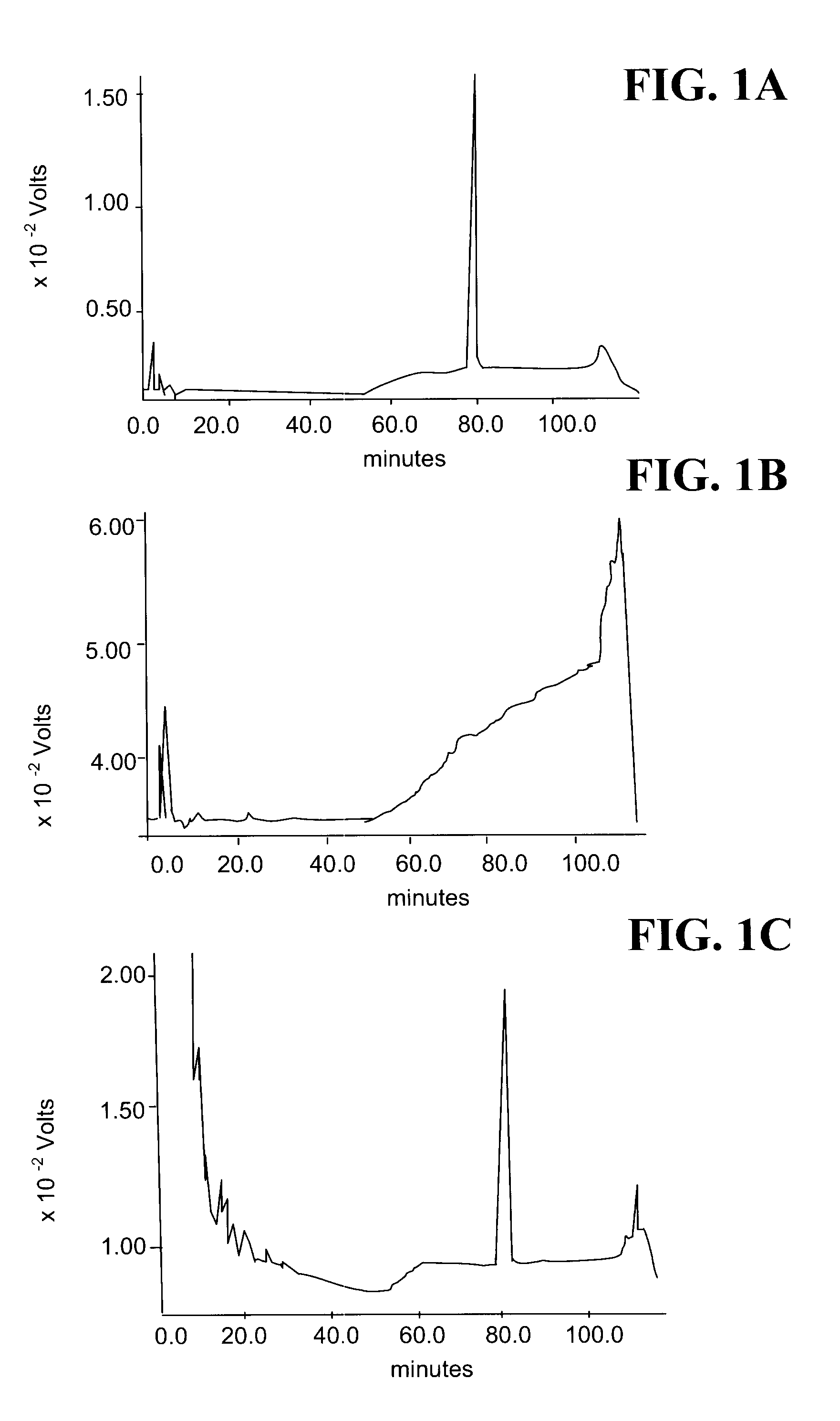Use of Bacteriocins For Promoting Plant Growth and Disease Resistance
a technology of bacteriocin and plant growth, applied in the field of purified polypeptides, can solve the problems that plant growth at low concentrations is not known to improve, and achieve the effect of promoting plant growth and disease resistan
- Summary
- Abstract
- Description
- Claims
- Application Information
AI Technical Summary
Problems solved by technology
Method used
Image
Examples
example 1
a) Bacterial Strains and Culture Preparations
[0102]Bacillus thuringiensis NEB17 (BtNEB17) was cultured in King's Medium B consisting of proteose peptone #3 (20 g L−1), K2HPO4 (0.66 g L−1), MgSO4 (0.09 g L−1) and glycerol (0.06 mL L−1) (Atlas 1995). The initial broth inoculum was taken from plated material and grown in 250 mL flasks, containing 50 mL of medium. The bacterium was cultured at 28±2° C. on an orbital shaker (Model 5430 Table Top Orbital Shaker, Form a Scientific Inc., Mariolta, Ohio, USA) for 48 h, rotating at 150 rev min−1. A 5 mL sample of subculture was added to 2 L of broth and cultures were grown in 4 L flasks under the same conditions as for the initial culture. Bacterial populations were determined spectrophotometrically using an Ultrospec 4050 Pro UV / Visible Spectrophotometer LKB (Cambridge, England) at 600 nm (Dashti et al. 1997) 96 h after culture preparation. A cell free supernatant (CFS), containing the BtNEB 17 compound, was prepared by centrifuging the bact...
example 2
Peptide Sequence and Production of T17 by NEB17
a) Bacterial Strains and T17 Isolation
[0120]Bacillus thuringiensis NEB17 (NEB17) was cultured in King's Medium B: Proteose peptone #3 (20 g L−1), K2HPO4 (0.66 g L−1), MgSO4 (0.09 g L−1) and glycerol (0.06 mL L−1) (Atlas 1995). The bacterial cultures were grown in 4 L flasks containing 2 L of liquid media for at least 72 h at 28±2° C. on an orbital shaker (Model 5430 Table Top Orbital Shaker, Form a Scientific Inc., Mariolta, Ohio, USA). Cultures were grown until an O.D. 600nm of at least 1.4 (or approximately 5.5 log CFU (colony forming units) cells per mL) as determined using spectrophotometry Ultrospec™ 4050 Pro UV / Visible Spectrophotometer LKB (Cambridge, England).
[0121]T17 partial purification was conducted by phase partitioning 2 L of bacterial with 0.8 L butanol for 12 h. The aqueous layer was removed and the organic layer concentrated at 50° C. under vacuum by rotary evaporation (Yamota RE500, Yamato, USA). The remaining material...
example 3
[0132]To determine whether or not thuricin 17 plays a role in plant growth enhancement by NEB17, this study determined the effect of thuricin 17 on soybean photosynthesis and growth under controlled environment conditions.
a) Isolation of Thuricin 17
[0133]Bacillus thuringiensis NEB17 was cultured in King's Medium B (Altas, 1995). A stock culture of bacteria was grown in 250 mL flasks, containing 50 mL of broth. Bacteria were cultured at 28±2° C. on an orbital shaker (Model 5430 Table Top Orbital Shaker, Form a Scientific Inc., USA) for 32 h, rotating at 150 rpm. Culture populations were determined at 600 nm using an Ultrospec 4300 Pro UV / Visible Spectrophotometer (Biochem Ltd., England), then adjusted with broth to a 1% inoculation ratio (final volume) in 4.0 L flasks containing 1.0 L of the broth culture medium. The resulting subculture was grown for 48 h. Subcultures were separated by differential centrifugation (Sorvall RC 5C Plus, Mandel Scientific Co., USA) for 20 min at 2,800×g...
PUM
| Property | Measurement | Unit |
|---|---|---|
| molecular weight | aaaaa | aaaaa |
| molecular weight | aaaaa | aaaaa |
| temperature | aaaaa | aaaaa |
Abstract
Description
Claims
Application Information
 Login to View More
Login to View More - R&D
- Intellectual Property
- Life Sciences
- Materials
- Tech Scout
- Unparalleled Data Quality
- Higher Quality Content
- 60% Fewer Hallucinations
Browse by: Latest US Patents, China's latest patents, Technical Efficacy Thesaurus, Application Domain, Technology Topic, Popular Technical Reports.
© 2025 PatSnap. All rights reserved.Legal|Privacy policy|Modern Slavery Act Transparency Statement|Sitemap|About US| Contact US: help@patsnap.com



